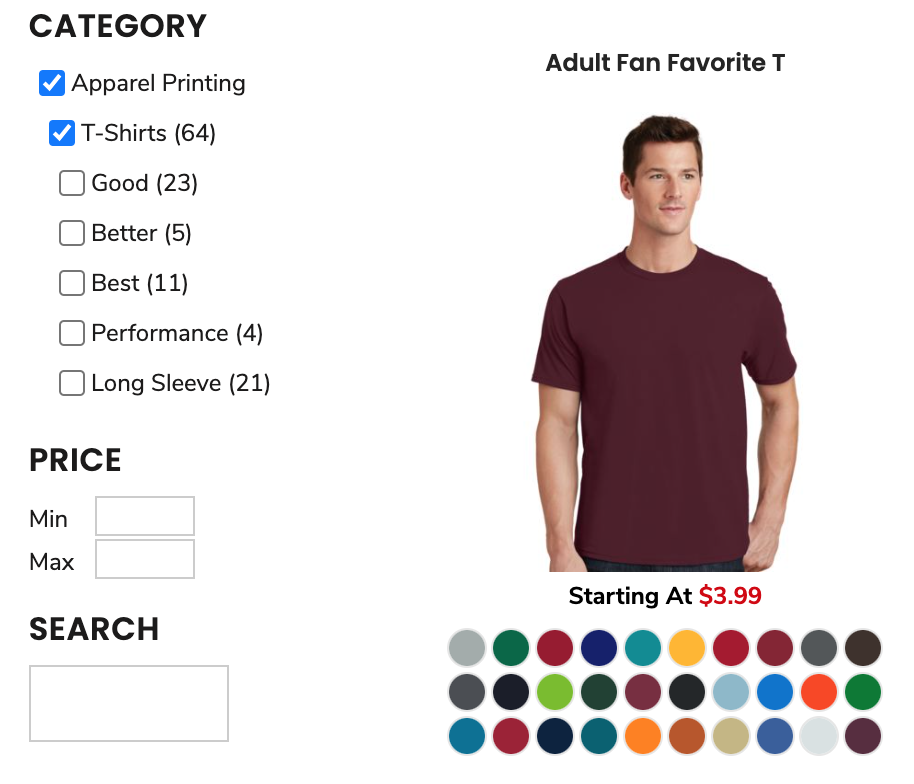In Part 1 of this series on how to build an apparel decoration website, we covered the basics of website navigation and core pages. In this article, we’ll explore the importance of product organization for easy customer navigation and how to go about it.
Organize your custom apparel offerings
The primary goal of a custom decoration shop’s website is to have a customer select a product, add artwork, and place an order or request a quote in as few clicks as possible. To make navigation of the website user-friendly, it is critical to take the time to properly organize and polish the product list beforehand.
Most shops have a primary supplier that might offer around 2,000 products, but offering the entire product line on the website would be overwhelming to customers. To make selecting a product to customize easier for customers, a shop must determine a core product mix they want to offer. This product mix should represent approximately 90% of what is demanded. The last 10% of custom product requests have to be custom quoted to avoid complicating the process for the majority of customer purchases.
Categories
Before you can determine your most popular products to offer, you must determine what categories you want to offer, which is how your customers will navigate the product mix. It is a good idea to “think like a customer” and name the categories and subcategories that make sense to everyone and not just decoration shops. Most apparel shops use between 8-12 primary categories and then create subcategories within each primary category.
The most common apparel printing categories are:
- T-shirts
- Sweatshirts
- Womenswear
- Youth
The most common embroidery categories are:
- Polos
- Jackets
- Headwear
- Accessories
Other commonly used categories include workwear, sportswear, and schoolwear. In addition, it is also a good idea to show a product in multiple categories/subcategories when applicable.

Subcategories
Within a category, you should break down the products into subcategories. T-shirts, for example, can be broken down into categories based on quality or price (i.e., good, better, best, performance, long-sleeve, etc.) Or by material type (i.e., cotton, polyester, and blends.)
When a customer selects T-shirts as a category, they will be shown around 40 products, but then when they want to only see the premium options, they can with just a click of a button.
Product families
When selecting what products to offer, it’s a good idea to use product families that you like and avoid redundancy when offering the same products made by different brands. Product families come in a wide variety of product styles and cuts (i.e., unisex, ladies, youth, toddler T-shirts, long-sleeves, sweatshirts, etc.) By offering product families, a customer can purchase a range of different products and know that the fit and colors will be consistent.
Offering very similar products made by different manufacturers/brands can make selecting a product confusing for a customer. For example, the cheapest cotton T-shirt from each of the top apparel manufacturers can all be used as substitutes for one another.
Bottom line
Whittling down a supplier’s catalog from 2,000 to 200 products is not difficult but can be tedious — and 100% necessary to make the customer ordering experience as smooth as possible. An awesome-looking website means nothing to a customer if the products are disorganized or difficult to navigate.




